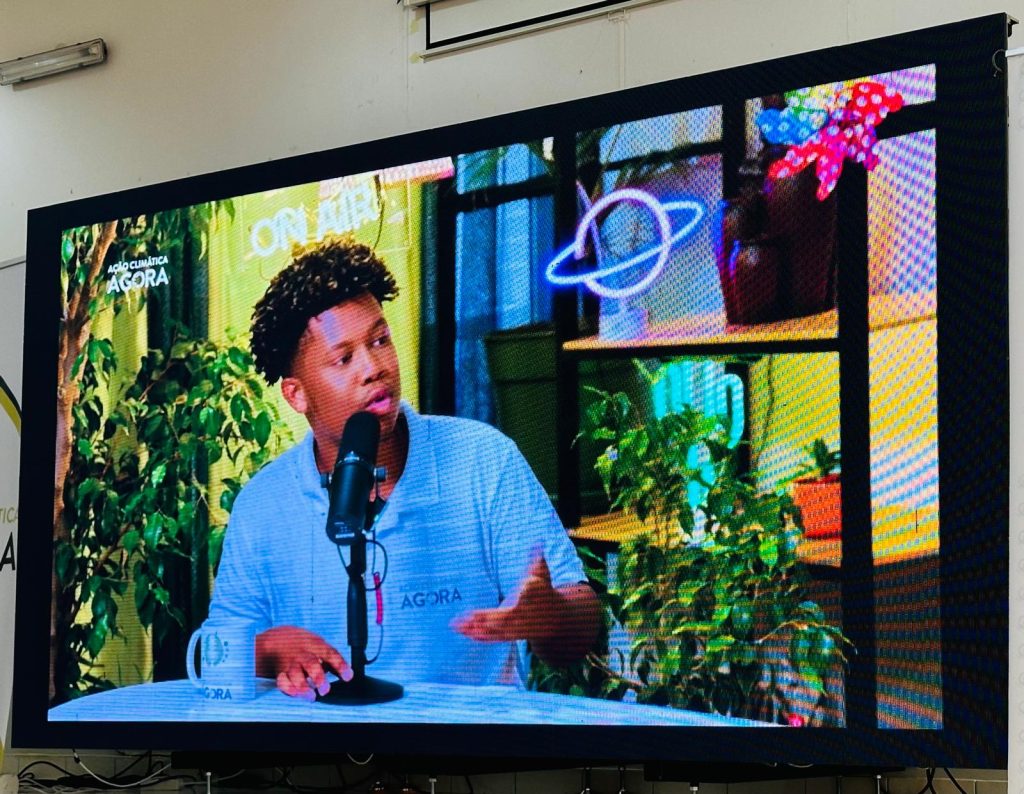In the middle of the 21st century, we sleep and wake up breathing technology. This is an extremely powerful tool appreciated by everyone, from children to senior citizens.
Audiovisual is a form of communication technology used to convey messages in a more impactful, dynamic, creative, sonically rich and visually appealing way. This concept covers not only cinema, photography, filming, radio, television and advertising, but also the internet, which has become a space saturated with audiovisual content.
On a global level, we are facing frequent climate change, something that is of concern to everyone because of the negative repercussions it brings. So, in a world where we are constantly surrounded by screens, images and audio combinations, why not combine the useful with the pleasant and start utilising the potential of audiovisuals to engage, educate and inspire? We can use this powerful tool in a variety of ways to raise public awareness and mobilise climate-friendly action.
To gain a deeper understanding of how audiovisuals can be a transformative agent in the fight against climate change, I had the pleasure of chatting to Jailson Pereira, better known as Jailsontuber, an outstanding student at the Children and Youth Academy for Climate Action and an active digital influencer on social media, offering valuable insights into the connection between audiovisuals and climate issues.
Jailson, how do you see the role of audiovisuals in raising awareness of climate action?
Jailson: “I believe it has a crucial role, as it has the power to reach a wider and more diverse audience through documentaries, videos and campaigns, and can highlight the urgency and consequences of climate change. In addition, audiovisuals can inspire and mobilise individual and collective action, generating greater awareness and urgency to tackle climate challenges.”
As a digital content creator, do you have any projects of your own created in favour of promoting climate action?
Jailson: “I don’t have a project of my own yet, but I am part of an extraordinary project developed by the DNA – National Directorate for the Environment, which is a podcast called “Climate Action NOW” where I am the presenter and receive several guests from various niches. The main aim is to debate climate change, educating the public about the impacts and seriousness of this evil, helping to raise awareness. In addition, in our podcast we demystify complex information, making it more accessible and understandable to the target audience.”
Do you have any strategies in mind for producing content that will attract the attention of the younger generation, since it’s a difficult audience when it comes to more serious issues?
Jailson: “As a creator of humour-oriented content, I believe that creating theatre plays and short films can go a long way towards drawing young people’s attention to climate change. By combining the useful with the pleasant, we provide moments of fun and laughter, while at the same time conveying important information in a more informal and relaxed way.”
How important is collaboration between content creators and activists in the production of audiovisual materials on climate change?
Jailson: “With content creators who have a wide and diverse audience, as well as skills in storytelling and creating engaging narratives, collaborating with activists who have specialised knowledge and access to reliable data, it is possible to significantly increase the reach of the climate change message. This partnership not only broadens the target audience, but also makes the message more impactful and accessible, engaging different audiences more effectively.”

How do you see the future of audiovisuals in the fight against climate change? What do you think needs to be implemented to better mitigate the effects of this evil?
Jailson: “I see the future of audiovisuals as a powerful tool in the fight against this critical environmental situation. The ability to tell impactful and engaging stories can raise awareness and inspire action. I believe that by creating short videos, which currently attract more attention from young people, we can reach a significant number of people and join forces in the fight against this climate cause.”
Finally, what advice would you give to other content creators who want to tackle issues of sustainability and climate change?
Jailson: “Firstly, before creating content of this kind, it’s essential to understand the subject well. Read articles, watch documentaries, talk to experts and take online courses to familiarise yourself with the concepts. Telling stories and human experiences is an important tip, as we create an emotional connection with personal stories. Use reliable facts and data and be creative when using different content formats, simplifying complex information to make it understandable. Collaborating with other content creators and activists is crucial, as I mentioned earlier. Maintain your authenticity and transparency, showing that you are learning and growing together with your audience. Finally, keep up to date, as the science of climate change is constantly evolving.”
Audiovisuals have a fundamental role to play in the fight against this ecological crisis, not only in raising awareness, but also in promoting concrete actions. In particular, I believe that by telling impactful stories, creating animations or videos alluding to climate change and using social media to convey transformative messages, we can inspire a global movement towards a more sustainable future. And as noted in the interview with Jailsontuber, digital influencers can be essential allies in promoting sustainable initiatives for our Blue Sphere.
The future is in our hands and in our technologies!
Author

Olinda Lima,
Coculi Secondary School, Santo Antão – Ribeira Grande
